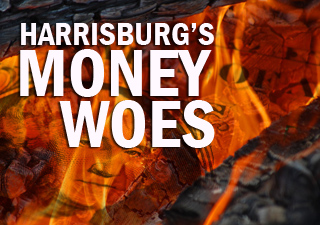Media
Tax-Exempt Government Property Adds to Harrisburg’s Woes
 The city of Harrisburg is facing a fiscal crisis primarily brought on by over-spending, accruing too much debt, and getting into areas government has no business—from the incinerator to owning a baseball team to collecting wild west artifacts.
The city of Harrisburg is facing a fiscal crisis primarily brought on by over-spending, accruing too much debt, and getting into areas government has no business—from the incinerator to owning a baseball team to collecting wild west artifacts.
But the Capitol City’s woes are aided by the abundance of tax exempt properties. Nearly half of all property value in the city of Harrisburg is owned by government or hospitals and other charities exempt from property taxes. Yet these properties still receive city services, including fire and police protection, and benefit from other core city responsibilities, like road repair and clearing the streets of snow (more or less, as anyone who has driven in Harrisburg after a snowstorm can attest).
According to information from the Mayor’s Office and the Dauphin County Assessor detailing Harrisburg tax-exempt government properties, assessing the municipal property tax rate on land (not on improvements, or imposing the school property taxes) would generate around $6 million per year, not an insignificant sum.
The city receives payment in lieu of taxes (PILOTs) to offset some of these costs. According to the Act 47 report, the city gets about $410,000 in PILOTs from 13 organizations. The state budget also includes $500,000 (down significantly from years past) for Capital Fire Protection. But these payments are a far cry from what these entities would pay if their property—even just the land portion—was taxable.
The tax exemption creates a perverse incentive for government and tax exempt organizations to acquire more property than they need. More importantly, these exemptions—combined with over-spending—require higher property taxes on businesses and homeowners.
According to a comparison in the Act 47 plan, property owners in the city of Harrisburg would pay two to three times as much as those in the surrounding suburbs, on average. This high tax burden helps explain why so many are moving out of the city: Harrisburg has lost 45% of its population since it peaked in 1950.